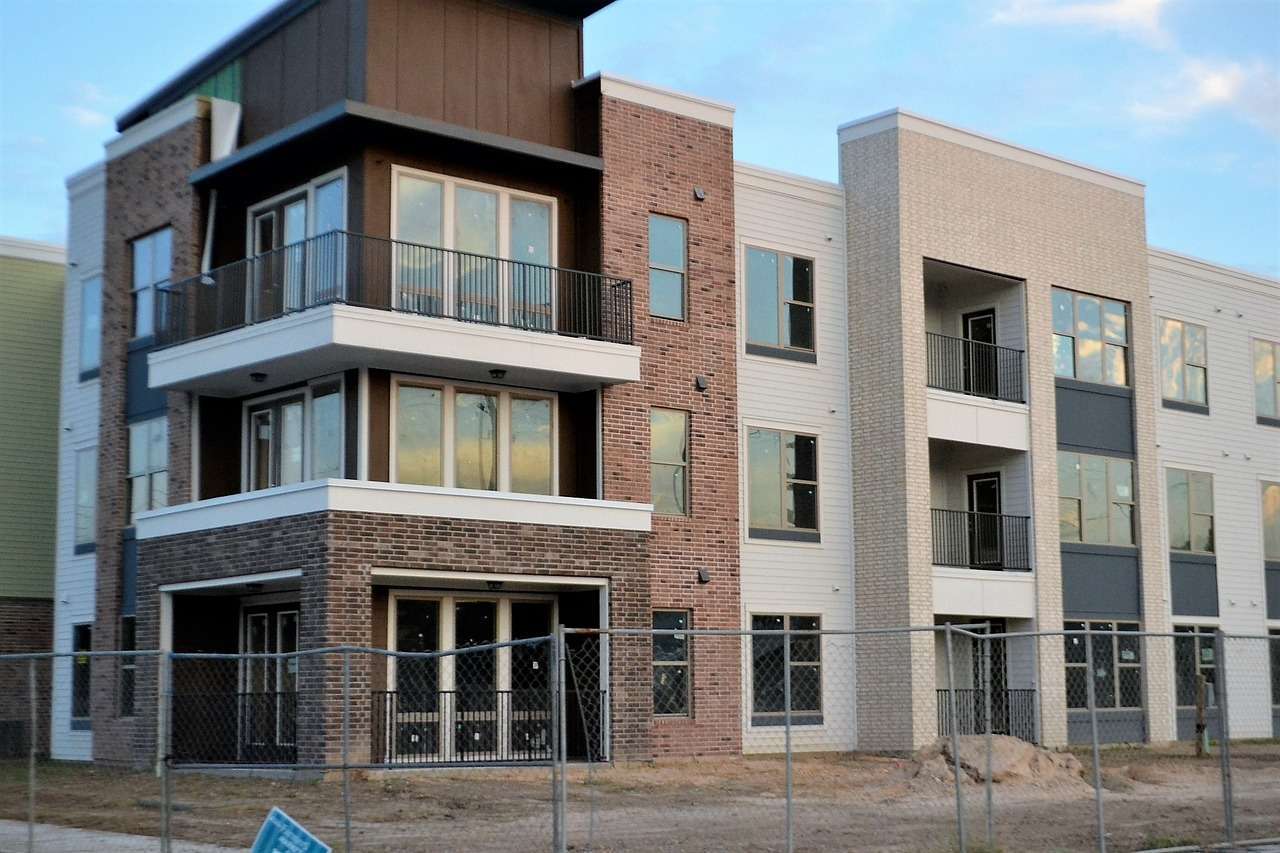9301 West Golf Rd | Des Plaines, IL 60016
Broker: Randolph Taylor rtaylor@creconsult.net | 630.474.6441
https://www.creconsult.net/golf-sumac-professional-building-medical-office-space-for-lease-9301-golf-rd-des-plaines-il-60016/

eXp Commercial is one of the fastest-growing national commercial real estate brokerage firms. The Chicago Multifamily Brokerage Division focuses on listing and selling multifamily properties throughout the Chicago Area and Suburbs.


Cost segregation is the method of re-classifying components of your commercial building from real property to personal property. This process allows the assets to be depreciated on a 5-, 7-, or 15-year schedule instead of the traditional 27.5- or 39-year depreciation schedule of real property. Thus, your current taxable income will be greatly reduced, and your cash flow could increase by 5% – 8% of your building’s cost.
Please see below eXp Commercials' Cost Segregation national partner's internal deadlines for the upcoming tax season for those who file timely:
March Tax Deadline (3/15/2023)
Internal Deadline is 1/20/2023 - All relevant data to complete the project must be received by this date in order to ensure timely delivery of the study for the March tax deadline. Relevant data needed includes the site survey, building cost basis/depreciation schedule, blueprints (if available), appraisal (if available), and construction/improvement cost detail (if applicable).
April Tax Deadline (4/18/2023)
Internal Deadline is 2/20/2023 - All relevant data to complete the project must be received by by this date in order to ensure timely delivery of the study for the April tax deadline. Relevant data needed includes the site survey, building cost basis/depreciation schedule, blueprints (if available), appraisal (if available), and construction/improvement cost detail (if applicable).
Please Contact Us to order your Cost Segregation Study.
https://www.creconsult.net/market-trends/commercial-real-estate-cost-segregation-2022-tax-deadlines/
 [ux_text text_align="left"]
[ux_text text_align="left"]
Top Frequently Asked Questions on Selling a Multi-family in Chicago
Here are some of the most frequently asked questions we get from clients looking to sell multifamily properties in Chicago.
If you’ve sold an investment property before, you’ll be familiar with the ins and outs of selling a multi-family. However, if it’s your first time, you’ll learn that the process works differently than it would with a single-family or condo.
A large part of a multi-family’s sale appeal will lie in its cash flow. Buyers looking for a multi-family are looking for more than just a home: they will want to see a property that generates good rental income, rents easily, and provides a financial incentive for them to buy. This could be in the form of easy upgrades they can make to boost rental income or as an empty unit for them to occupy and offset their own living expenses.
Of course, we’re biased...but we do recommend working with a broker who is experienced in the multi-family market in your neighborhood. Not only will they be able to pull good comps and provide a market analysis of how you should price the property, but an experienced agent will know how to show the proeprty to different types of buyers, whether they are experienced investors or first-time multi-family buyers who want some supplemental income. Brokers who work in multi-family markets are also in the know about rent prices and trends, which will help them sell your home at the right price.
Some buyers look for multi-families with units that could benefit from some updating because they see it as an opportunity to raise the rent using some sweat equity. Your agent should be knowledgeable of the renter’s and buyer’s market for your area and property type and will have good recommendations of what types of updates to make before selling.
Making simple upgrades around the property and in common areas like hallways and entryways can be an easy way to boost the property’s curb appeal that won’t break the bank, whether it’s through new fixtures or a fresh coat of paint.
One of the most important parts of getting ready to list your property is confirming the number of legal units in the building. In a city full of old homes like Chicago, many apartment units have been created in old basement spaces or have been de-converted into larger single unit. If you sell your property with an incorrect number of legally recognized units, you could face legal issues down the road. To get the most accurate picture of how your property should be valued and listed, get in touch with the local village to confirm the number of legal units listed in their records.
Buyers and their lenders will typically appraise a multi-family home using the income approach method instead of simply using comps in the area to compare values. This means that the appraiser will look at the cost of property maintenance and rental income to evaluate a property’s cash flow. To price your multi-family, you should do appraise a building’s income and use comps in the area to accurately represent what someone might want to pay for it.
One of the trickiest parts of selling a multi-family is to make sure that you are aware of your tenants’ legal rights and that you make the selling process as effortless for them as possible.
An experienced Broker will know the ins and outs of how to show a property with occupied units (which is one of the biggest reasons why you should take your time to find a good agent). The most important concern when it comes to showing units is to make sure that the tenant is aware of the appointment sufficiently ahead of time. Check your lease agreement to see if there are already guidelines in place, or contact your tenant prior to listing the process to come to an agreed-upon amount of days or hours before the showing when they should be contacted.
Source: Selling an Apartment Building FAQ’s
[/ux_text] https://www.creconsult.net/market-trends/selling-an-apartment-building-faqs/

Everyone has eyes on the multifamily market activity as we move into the new year. Here’s a list of the four biggest multifamily trends we’re watching in 2022 and 2023.
#1. How Interest Rates Boost Multifamily Occupancy
As the Federal Reserve continues to hike interest rates to combat inflation, we’re seeing multifamily reap some unexpected rewards.
Because the interest rates on mortgage loans are increasing and it’s becoming more expensive to receive funding for a home purchase, many buyers are choosing to hold off. As potential buyers choose not to go through with their real estate transactions or wait until the market stabilizes, people rent for longer.
According to the 2022 Midyear Commerical Real Estate Outlook report published by JPMorgan, the multifamily market is set to remain strong due to high home prices and increasing mortgage rates. Multifamily vacancies are expected to stay low even as rent prices continue to increase.
As we move into the new year, pay close attention to interest rates and housing prices in the residential real estate market.
High-interest rates and expensive housing prices for single-family homes will likely continue to boost the multifamily market throughout 2023.
When the residential market factors begin to normalize, it could signify that the multifamily market will also rebalance — which could look like a drop in performance. However, it may be that the market is stabilizing after significantly strong activity for the past few years.
#2. Creative Reuse and Renovation Address Affordability Crisis
The nationwide supply of affordable housing is expected to remain low throughout 2023. The need for affordable housing opportunities impacts multifamily, and one of the most popular solutions will be creative reuse projects and modernizing renovations.
Turning other commercial real estate asset classes into multifamily buildings is expected to become commonplace in the 2023 market as more investors and developers respond to the need for more housing at affordable rates.
Renovating existing multifamily buildings to become affordable housing options will also be a way for property owners to pivot to increase the performance of their multifamily assets. Since the demand for affordable multifamily units is characteristically high, this will be an attractive investment decision for the market.
#3. The Workforce Turns to Multifamily
As more workforce members finally return to the office, the demand for metropolitan apartments will likely remain high. According to Victor Calanog, Head of CRE Economics at Moody’s Analytics, the combined factors of the national housing shortage and high single-family home prices position workforce housing as a promising investment for multifamily investors.
Targeting urban environments and nearby professional market hubs could strengthen the performance of multifamily buildings looking to appeal to tenants in the workforce. To help position multifamily assets as attractive options, renovating and modernizing the building could be helpful — particularly if the building is older.
Another key consideration for positioning a multifamily building to target the workforce is the need for a strong internet connection. Your building should have great connectivity for both cellular and WiFi needs.
Many tenants will work from home, either a few days a week for their hybrid positions or full-time remote jobs. Ensuring that your building has a stable connectivity infrastructure is essential for creating a viable work environment for these tenants.
Some buildings offer WiFi plans to attract and retain tenants. At the very least, the building needs to support cell and WiFi — not be a connectivity dead zone.
#4. The Flight to Quality Persists
Across every commercial real estate asset, quality is considered critical as more tenants consider the experience that a building or space creates.
From the office to retail and multifamily, tenants are on the flight to quality. This was sparked as new concerns emerged from the pandemic when everyone re-entered the built environment after a long pause.
When looking for a place to call home, multifamily tenants will weigh all their options. Multifamily tenants likely have many requirements on their wishlists. They will research to see which local building best meets their needs, wants, and non-negotiables.
To help multifamily assets perform, it’s important to maintain the building and modernize the common areas. Here are a few ideas that can help get a multifamily building prepared to attract tenants in the 2023 market:
Source: 4 Multifamily Trends We’re Watching into 2023
https://www.creconsult.net/market-trends/4-multifamily-trends-were-watching-into-2023/
The commercial real estate debt market crumpled last year, weighed down by historically aggressive interest rate hikes, but one little-watched corner of the sector has stepped in to fill the void partially.
Regional and community banks have grabbed a larger market share of commercial real estate loans as banking giants like JPMorgan Chase, Bank of America and Wells Fargo have retreated from the market.
“The local and community banks have really stepped into that space that the debt funds were in before,” said JLL Executive Managing Director Gerard Sansosti, who co-leads the firm's national debt practice. "I don’t think they’re under the same scrutiny that the money center banks are."
Small and regional banks are picking up the slack left by major banks as they pull back on CRE lending.
But regional banks, with assets between $10B and $100B, and even smaller community banks can only fill so much of the vacuum, and if the Federal Reserve continues to raise rates, they will start to pull back themselves before too long, experts told Bisnow.
“Unless there is more clarity to the market and the capacity loosens up a little bit, I believe [smaller banks] will get selective,” Sansosti said.
Banks overall have taken a larger market share in CRE as other lenders, such as debt funds, CMBS, and insurance companies all saw activity plummet. Banks made up 46.4% of all nonagency commercial and multifamily lending in the U.S., up from 23.1% in the same period of 2021 and 30% in the second quarter, according to CBRE. Banks made up more than 30% of lending in the second quarter, according to a CBRE report.
Michael Riccio, CBRE senior managing director and author of the report, told Bisnow that community and regional banks were the main players during this period.
He said the volatile interest rate environment “essentially shut down” lending activity from major money centers. Overall loan closings dropped by 11% from the second quarter of 2022 and 4.7% year-over-year.
Truist Financial Corp., one of the country’s ten largest banks with nearly $550B in assets, pulled back on commercial lending as its underwriting raised projected interest rates from 5.5% in the middle of 2022 to between 7% and 7.25% today, said Mark Hancock, senior vice president of Truist’s commercial real estate lending division.
“We’re taking care of our existing clients,” Hancock said. "We’re trying to get creative where we can without breaking our guidelines."
As a result, Tony Marquez, the president of commercial banking at Bethesda, Maryland-based EagleBank, said he’d seen more traffic through his door among developers and real estate investors.
“There is a clear indication from my vantage point that we’re getting more looks at different deals because some of the larger banks have not been as active in the past year,” Marquez said, adding that loan growth for the regional bank was 2.2% in the third quarter compared to just 1% in Q2.
Smaller banks are able to fill this void given they receive less scrutiny from banking regulators compared to money center institutions, Sansosti told Bisnow. Money centers are subject to annual federal stress tests and limits on how much commercial real estate lending they’re able to add to their balance sheets.
Michael Barr, the Federal Reserve’s vice chairman of supervision, warned last month that the central bank could tighten stress test requirements further, even though 33 of the largest banks passed those stress tests last summer, indicating they could weather a severe recession and continue to lend, Banking Dive reported.
Smaller banks see the vacuum left by money centers as a way to grab more market share, Commercial Real Estate Finance Council Executive Director Lisa Pendergast said.
“If you’re one of the few games in town, then you have more opportunity to ensure your loan is as creditworthy as it can possibly be,” Pendergast said.
However, there are limits to the size of loans these banks can make. Most regional banks don't lend more than $40M to $60M on any deal, Riccio said, which means investors and developers have to go to multiple banks to cobble together enough debt for bigger projects.
"They’re not going to do a $200M loan," Sansosti said. "They’re filling a need, but it’s more in that small to medium-sized loan."
For now, Sansosti said the smaller banks have the upper hand, pushing potential clients to open accounts and make deposits in exchange for loans while tightening their underwriting standards.
But unless the Fed ceases its interest rate hikes or reverses course in the event of a severe recession, smaller banks may soon have to pull back themselves, Sansosti said.
Some regional banks have slowed down already. Bridge Logistics Properties, industrial development and investment arm of Bridge Investment Group, has historically relied upon regional banks and debt funds for its projects, Eastern Region Managing Director Greg Boler said.
Boler said Bridge is getting construction loan quotes for a future project, but with higher interest rates pushing up borrowing costs, the quotes so far are “all pretty expensive.” It’s forcing Bridge this year to pivot toward acquiring warehouses instead of developing new ones.
“We killed a lot of deals. We did keep one deal that we were bullish on because of this location and the basis from a rental rate increase,” he said. “Nobody is going to be in a rush to catch the falling knife.”
Source: Smaller Banks Are Stepping Into The CRE Lending Void
https://www.creconsult.net/market-trends/smaller-banks-are-stepping-into-the-cre-lending-void/
The Commercial Real Estate Symposium will provide junior and senior agents and brokers with valuable insights on topics, including: international opportunities, capital and funding for small businesses in today’s market, how to attract investors, and much more.
Dates: April 25-26, 2023
Start Time: 9 a.m. - 4 p.m. CST
Location: eXp Commercial Campus
We look forward to seeing you in the metaverse!
Important: Please download the virtual eXp Commercial Campus prior to the event, and follow the instructions to login and create your avatar. Feel free to explore the campus before the event begins.
At the halfway point of the year, Cleveland, Cincinnati, Columbus, and Chicago have all seen rent growth well ahead of the national average....
